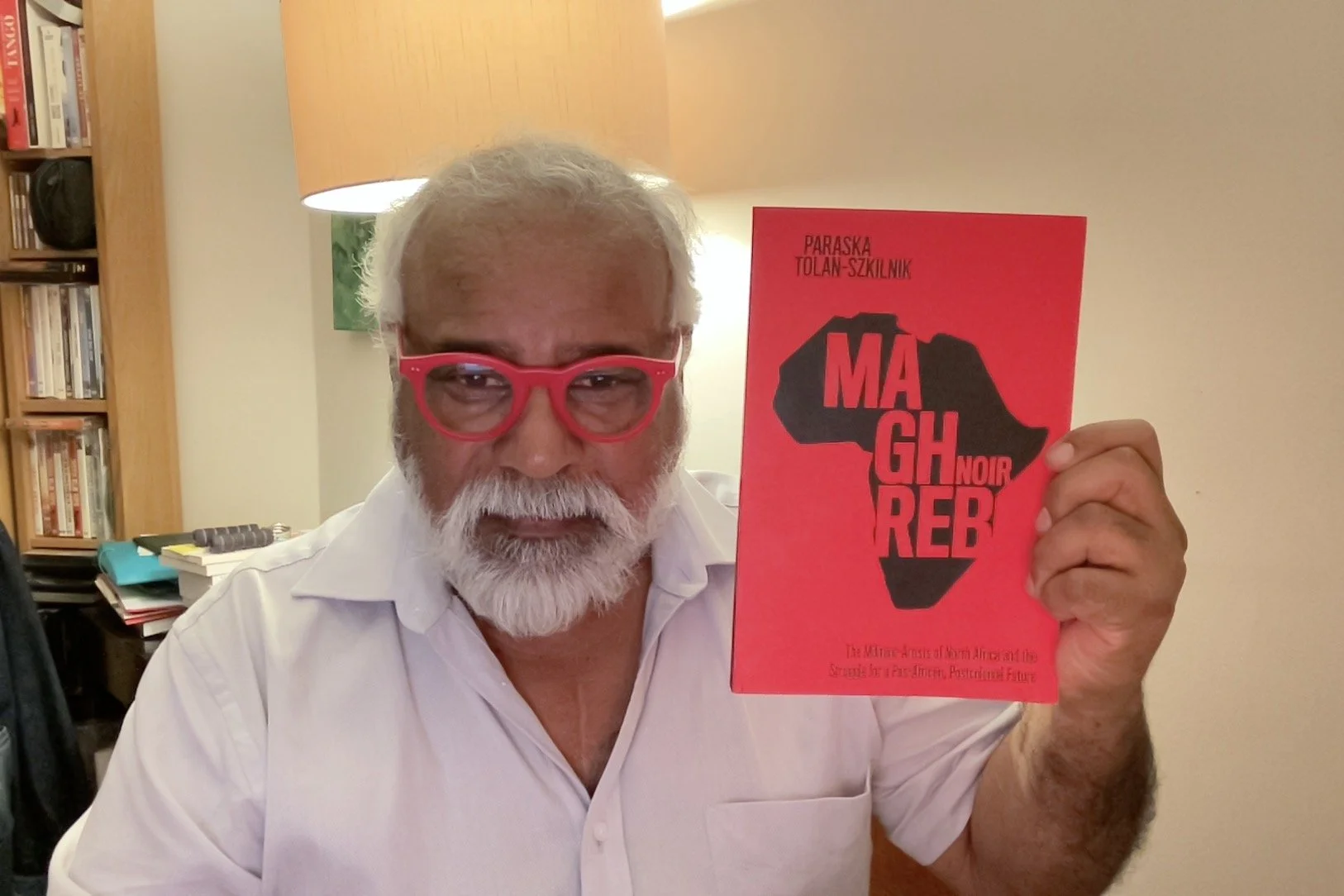Historian, Penn Alum, Returns to Philadelphia to Discuss North Africa’s Militant Artists of the ‘60s and ‘70s
Yaqeen Yamani
Historian and University of Pennsylvania alum, Paraska Tolan-Szkilnik, above, returned to Penn earlier this Fall to give a talk on her recently published book: Maghreb Noir: Pan-Africanism and the Militant-Artists of North Africa. Photo courtesy of Tolan-Szkilnik.
Historian and University of Pennsylvania alum, Paraska Tolan-Szkilnik (she/her), 34, returned to Penn earlier this Fall to give a talk at the school’s Middle East Center on her recently published book, Maghreb Noir: Pan-Africanism and the Militant-Artists of North Africa (Stanford University Press, July 2023).
The students in attendance “had detailed questions, and were really interested in the topic,” said Tolan-Szkilnik in an interview with al-Bustan. Tolan-Szkilnik, an Assistant Professor in the Department of History at Cornell University, started working on Maghreb Noir in 2013 while working towards her PhD at Penn in 20th-century North African history. The book focuses on a region of Northwest Africa—including Morocco, Algeria, and Tunisia—often referred to as the Maghreb.
“Upon gaining independence in the ‘50s and ‘60s, the governments of Morocco, Algeria, and Tunisia began aiding Black liberation struggles in the Global South,” according to Tolan-Szkilnik, noting that the Maghreb was thus transformed into a haven for militant artists. In Maghreb Noir, Tolan-Szkilnik looks at the lives of these militant artists, who in the 1960s and 1970s, she says, “collectively challenged the neo-colonialist structures and the authoritarianism of African states.”
“I'm looking at this period where a lot of black activists and artists from the US and the Caribbean, but also from Angola, Mozambique, and Senegal spent significant amounts of time in the Maghreb,” said Tolan-Szkilnik.
“The artists supported the creation of a new ideology of revolution—one that was transnational, trans-racial, and in defiance of the emerging nation-states,” says Tolan-Szkilnik, who interviewed many of the artists for the book. “They had to confront some of the questions, such as: ‘What did Africa mean? Was Africa about pan-Africanism? about being black? Because here they were in North Africa, where people weren't necessarily black, right? Was pan-Africanism about rejecting French? Or could you use French? Was pan-Africanism about rejecting Portuguese? Or could you use Portuguese?” she said. “So somehow being in North Africa allowed them to sort of transcend some of the initial boundaries of Pan Africanism, and think of it as a sort of multiracial project, rather than a project that had mostly been carried at that point by black Americans.”
“Growing up in France, the Maghreb played such a big part in our political and educational consciousness.”
Algerian poet and fiction writer Hocine Tandjaoui (b.1949), above, is one of the militant artists Paraska Tolan-Szkilnik interviews for Maghreb Noir. Photo courtesy of Tolan-Szkilnik.
Tolan-Szkilnik says her interest in the Maghreb began as a child raised in Nantes, on France’s Atlantic Coast. “Growing up in France, the Maghreb played such a big part in our political and educational consciousness,” said Tolan-Szkilnik, who was born in Madison, Wisconsin. “I would push professors and teachers in school: ‘What actually happened in Algeria?’ It always seemed like a question that was avoided in class.”
While researching Maghreb Noir, author Tolan-Szkilnik found a poster of “L’Âge du Vietnam,” a poem by Haitian poet and former Communist activist René Depestre in the archives of Algerian militant poet Jean Sénac. It was signed by members of the Maghreb generation. Tolan-Szkilnik says it demonstrates Sénac’s unyielding commitment to a worldwide movement, one that considered the voices of the downtrodden in Vietnam, Algeria, and across the African continent. Photo courtesy of Tolan-Szkilnik.
“What kind of imagination does the Maghreb evoke in the world as a space of resistance to French colonialism and neo-colonialism?”
She says she grew up reading books by African American writers, including James Baldwin who references Algeria in his work. “That's where I started to sort of see these connections and got interested in the Maghreb. What kind of imagination does the Maghreb evoke in the world as a space of resistance to French colonialism and neo-colonialism?” Tonlan- Szkilnik said.
Tolan-Szkilnik defines ‘militant artists’ as artists who are not only making art about politics, revolution, and resisting power but are artists who “alongside their careers as militant poets and filmmakers, are engaged in direct political action. In Rabat, Algiers, and Tunis, they participated in protests, shipped armaments, conducted military training, organized secret meetings, and disseminated banned literature, in short, they performed the work of the Revolution.”
Two militant artists whom Tolan-Szkilnik writes about in the book are Algerian poet-militant Jean Sénac, who was assassinated in 1973 in Algiers, and Moroccan poet, novelist, and political activist, Abdellatif Laâbi. When Tolan-Szkilnik gifted a copy of her book to Laâbi, he told her, “You are doing so much to restore the memory of this generation.”
***
Yaqeen Yamani is a Palestinian photographer based in Philadelphia. She holds a BA in Media Studies from Al-Quds Bard College, and is currently pursuing her MFA in photography at Tyler School of Art and Architecture. She interned at InLiquid Gallery in 2023 and is a member of La La Lil Jidar Collective.




